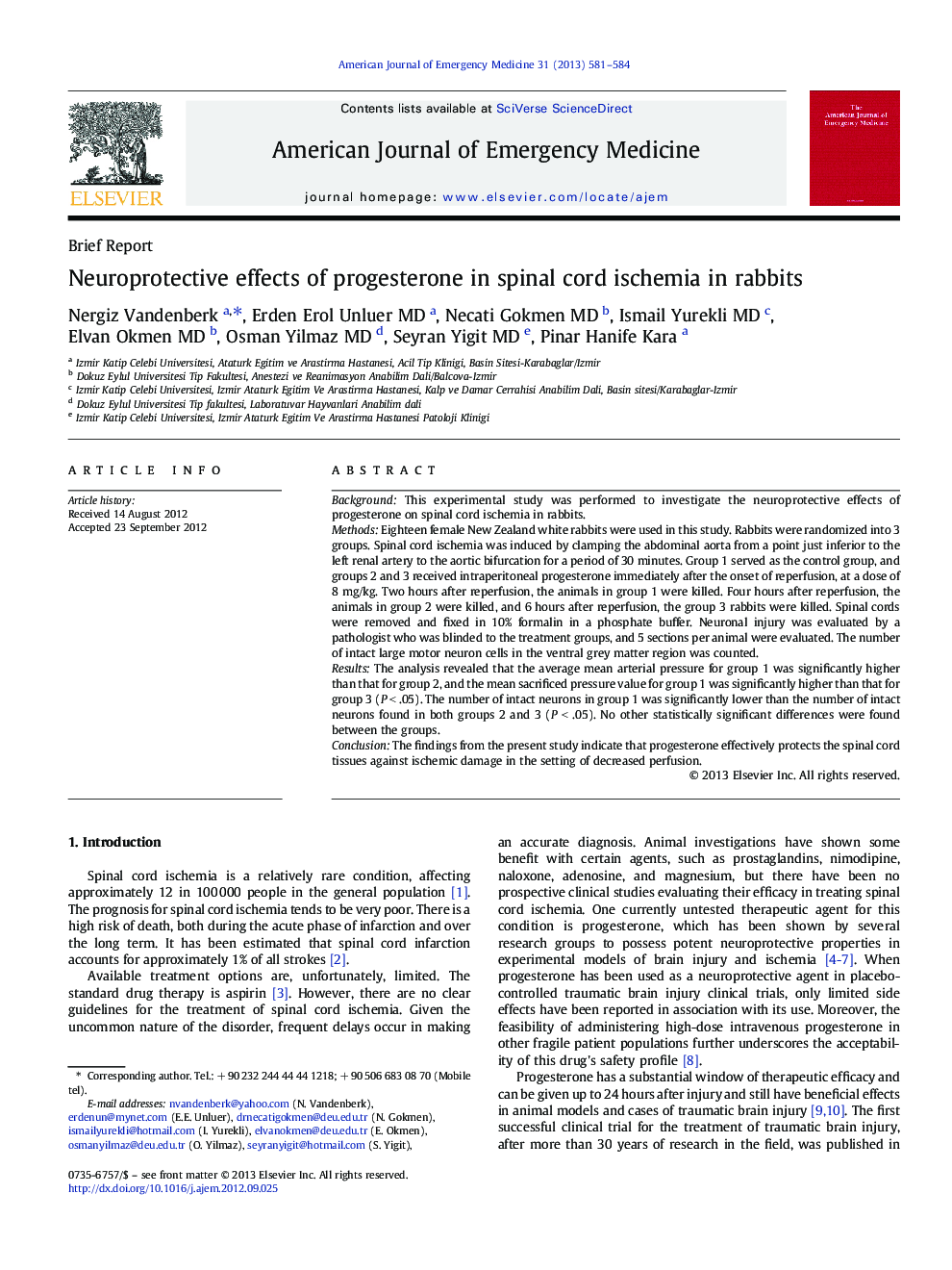| Article ID | Journal | Published Year | Pages | File Type |
|---|---|---|---|---|
| 3223835 | The American Journal of Emergency Medicine | 2013 | 4 Pages |
BackgroundThis experimental study was performed to investigate the neuroprotective effects of progesterone on spinal cord ischemia in rabbits.MethodsEighteen female New Zealand white rabbits were used in this study. Rabbits were randomized into 3 groups. Spinal cord ischemia was induced by clamping the abdominal aorta from a point just inferior to the left renal artery to the aortic bifurcation for a period of 30 minutes. Group 1 served as the control group, and groups 2 and 3 received intraperitoneal progesterone immediately after the onset of reperfusion, at a dose of 8 mg/kg. Two hours after reperfusion, the animals in group 1 were killed. Four hours after reperfusion, the animals in group 2 were killed, and 6 hours after reperfusion, the group 3 rabbits were killed. Spinal cords were removed and fixed in 10% formalin in a phosphate buffer. Neuronal injury was evaluated by a pathologist who was blinded to the treatment groups, and 5 sections per animal were evaluated. The number of intact large motor neuron cells in the ventral grey matter region was counted.ResultsThe analysis revealed that the average mean arterial pressure for group 1 was significantly higher than that for group 2, and the mean sacrificed pressure value for group 1 was significantly higher than that for group 3 (P < .05). The number of intact neurons in group 1 was significantly lower than the number of intact neurons found in both groups 2 and 3 (P < .05). No other statistically significant differences were found between the groups.ConclusionThe findings from the present study indicate that progesterone effectively protects the spinal cord tissues against ischemic damage in the setting of decreased perfusion.
